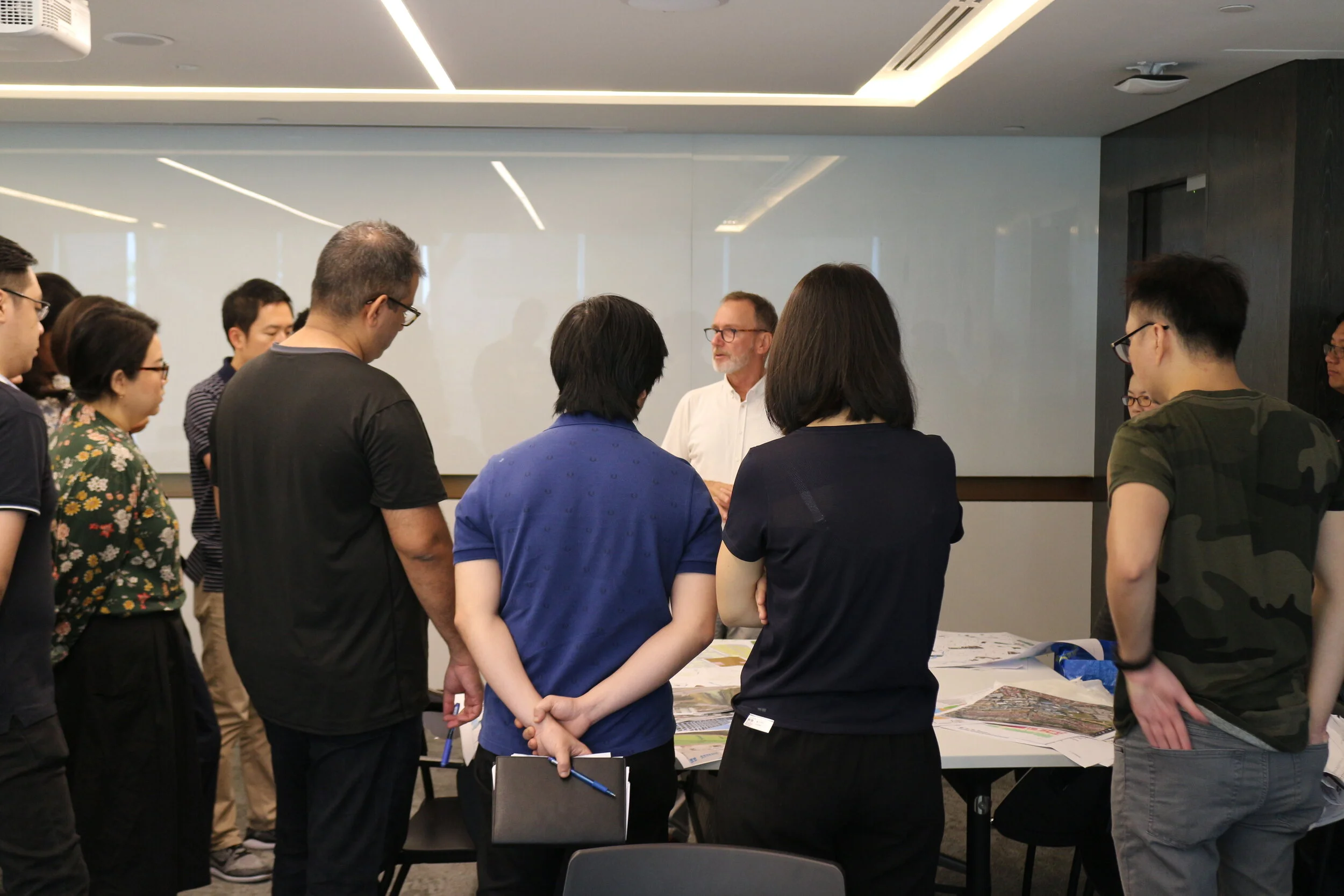
Revitalize, Innovate, Thrive: Transforming Industries for a Sustainable Future
Jurong Town Corporation (JTC), a prominent government agency in Singapore, recently orchestrated a comprehensive workshop and engaging excursion for the dedicated professionals of their esteemed Department of Town Planning and Architecture. The focal point of this enlightening event was the strategic Ang Mo Kio Industrial Park 2, where participants gathered valuable insights to shape the future of urban development.
Under the guidance of Dreiseitl assisted by Raymond Yong, the workshop proved to be a dynamic platform for the exchange of knowledge and ideas. Dreiseitl's expertise in blue-green infrastructure took center stage, captivating the audience with a deep dive into its potential and the profound impact it can have on the transformation and renewal of the Ang Mo Kio Industrial Park 2.
The workshop provided a thought-provoking exploration of sustainable urban planning, emphasizing the significance of incorporating blue-green infrastructure elements to enhance environmental resilience, aesthetics, and overall well-being. Dreiseitl's visionary approach, coupled with Yong's practical insights, offered a holistic perspective on the intersection of architecture, town planning, and ecological sustainability.
DREISEITLconsulting GmbH
Teachings and Workshop, Water Sensitive Urban Design, Blue-Green Infrastructure, Regenerative Urban Landscapes, Water Sensitive Urban Design, Industrial Regeneration and Parks
Location
Ang Mo Kio
Client
Jurong Town Corporation, JTC (Architecture and Urban Design Department)
Timeline
Workshop at Jurong Town Hall, 15th - 17th July 2019
Status
Completed
Like many districts in Singapore, Ang Mo Kio has transformed significantly, evolving from a tropical rainforest to a rural landscape with scattered housing and sheds. It then transitioned into a denser mixed-use area, serving agriculture and housing needs, ultimately becoming the thriving Ang Mo Kio Industrial District we see today.

Presently, Ang Mo Kio Industrial Park 2 exhibits a monofunctional and isolated structure where each industrial unit is individually separated and fenced, accessible only by car. This design lacks appeal for walkability and cycling, and there is a notable absence of connection to the surrounding landscape. The current urban layout reflects an outdated structure with stagnant competition dynamics. To meet the demands of the future, industries must adopt a fresh perspective that prioritizes innovation, cooperation, and co-creation, embracing the principles of an open circular economy.
The imperative to reinvent the industrial landscape stems from a variety of factors, including the pressing need for a more environmentally friendly system closely tied to nature. This reinvention could involve implementing circular economy practices or enhancing the integration of sustainable architecture, reflecting a forward-thinking and ecologically conscious approach to industrial development
The experts were divided into five groups, each comprising approximately 3-5 individuals. These groups then dedicated their efforts to specific zones, engaging in intensive brainstorming sessions and discussions. The collaborative process included activities such as sketching, diagramming, application of design principles, logical thinking, and the exploration of bold design ideas.

The Bishan-Ang Mo Kio Park excursion provides experts with a valuable opportunity to study existing blue-green infrastructure, nature-based solutions, landscape typologies, hydrology systems, ecosystems, and biodiversity. This hands-on experience enhances their understanding and informs insights for practical applications in sustainable and ecologically sound urban planning and design.

The Bishan-Ang Mo Kio Park excursion offers experts a valuable opportunity to study blue-green infrastructure, nature-based solutions, landscape typologies, hydrology systems, ecosystems, and biodiversity. This hands-on experience enhances their understanding and informs practical applications for sustainable and ecologically sound urban planning and design.































